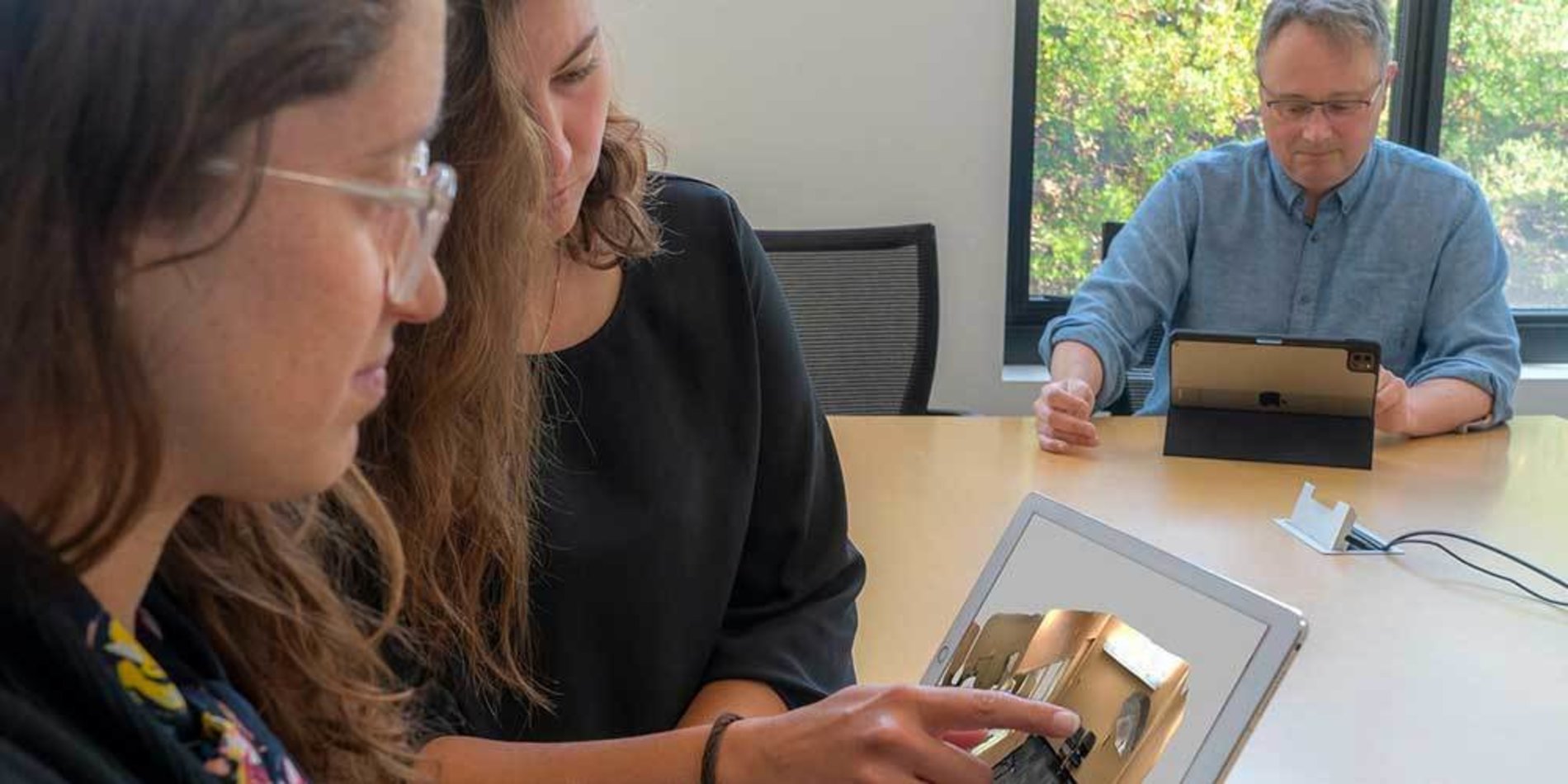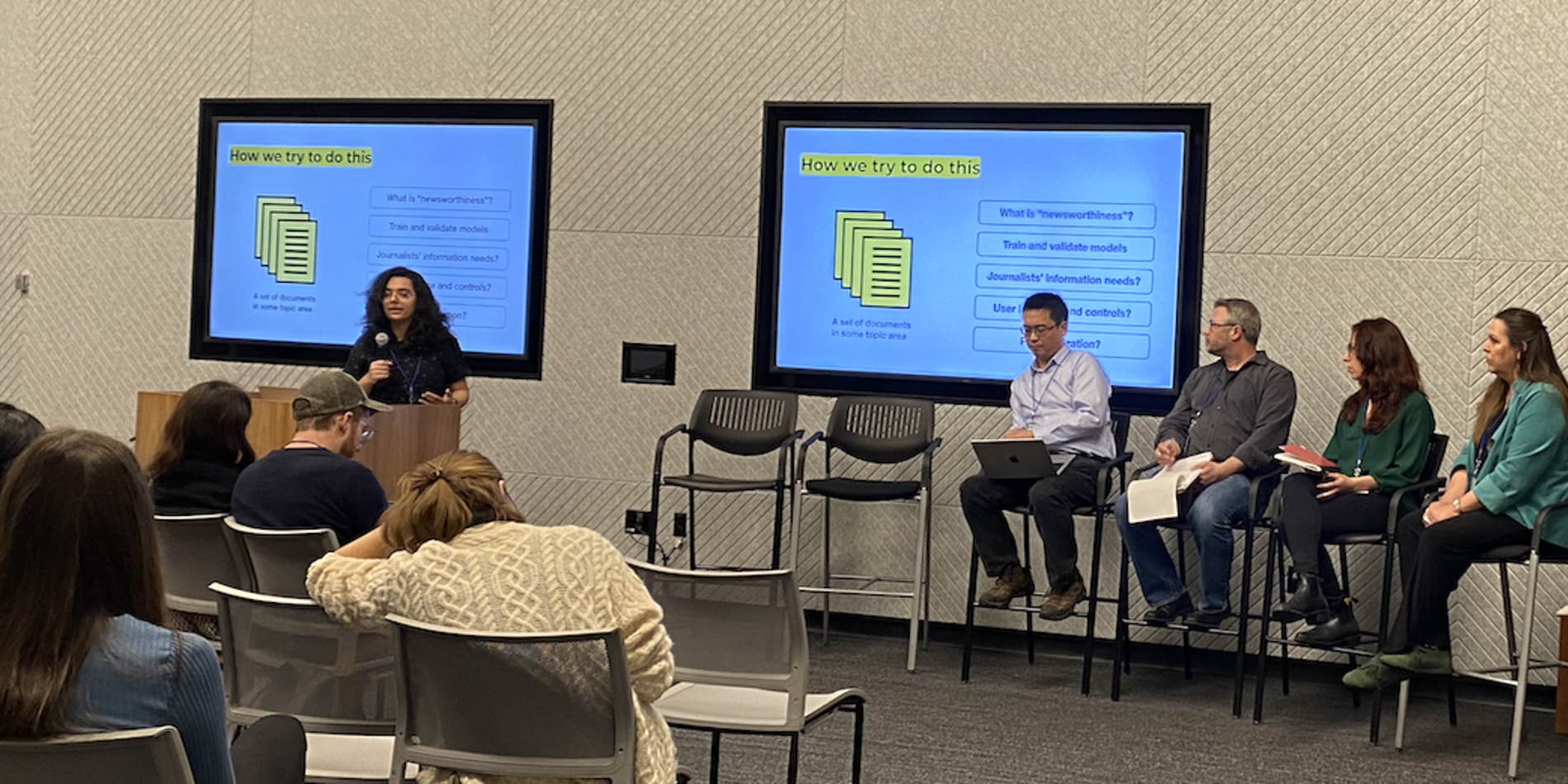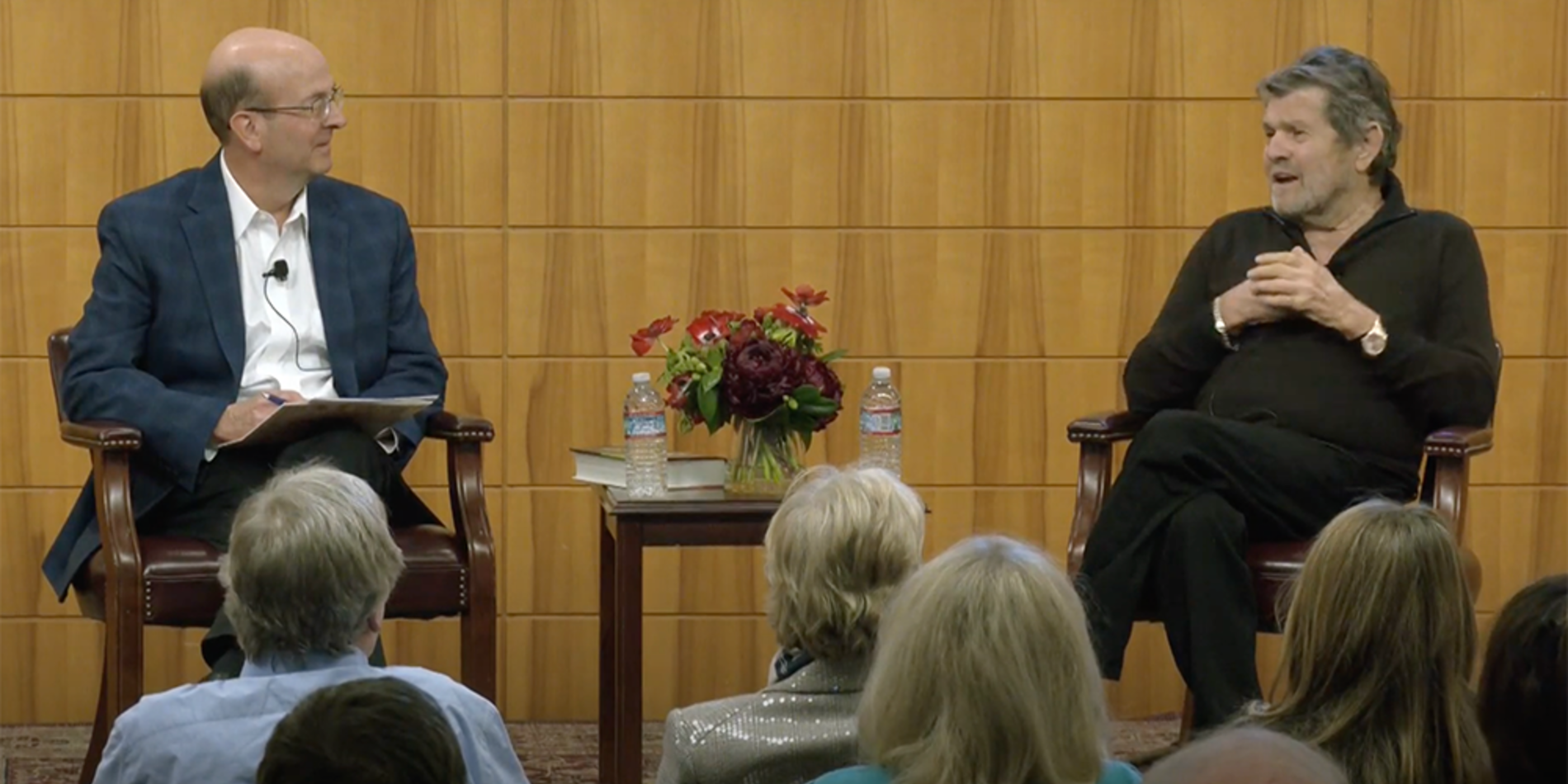How Stanford Journalism alums launch data journalism careers

When the 2021 Pulitzer Prizes were announced, Stanford Journalism alumna Jackie Botts (MA 2018) and the team she worked with at Reuters won the explanatory journalism category.
The award-winning project began when Botts was a graduate student in the Stanford Journalism Program, taking a data journalism course that collaborated with Reuters. The investigative project looked into qualified immunity for police officers and found law enforcement were using that legal doctrine to shield officers who use excessive force.
Botts said that course she took in spring 2018, “Becoming a Watchdog,” showed her the possibilities that data journalism could unlock.
“I feel like the program opened my eyes to what’s possible … Where is the data that could show this? And what questions could we ask of it?” said Botts, who worked for Reuters after graduation for another year. “It gave me this larger curiosity that you could do a lot more if you have the data for a story.”
Botts, who now covers economic inequality at CalMatters through Report for America, is part of a growing number of Stanford Journalism Program alumni who have launched impactful careers in data journalism, applying their newfound and sharpened skills to industry roles that range from investigative reporting to front-end development to newsroom engineering. Alumni are doing data journalism at organizations like Bloomberg News, ProPublica, the Center for Public Integrity and the San Francisco Chronicle.
Stanford’s nine-month master’s program in journalism, offered via the Department of Communication, has a specialized emphasis on data and computational journalism, in addition to core skills in narrative writing and multimedia production. Data journalism courses cover topics that include fundamentals in public affairs data journalism to programming to building news applications. Students can learn everything from spreadsheet techniques to SQL to more advanced tools like Python and R.
“You can be any kind of reporter and understanding how to use data will make you a more effective reporter,” said Cheryl Phillips, Hearst Professional in Residence and director of the Big Local News platform. “It will help you think about the journalism that you do on a different plane — so you can go from an anecdotal story to something that actually might be able to look at whether something is really a trend or an outlier and why.”
Phillips, who previously worked at The Seattle Times, says students who go through the graduate program benefit from gaining that “data frame of mind.”
That framing is something that fueled alumna Dilcia Mercedes’ (MA 2019) interest in building things with data. “It’s just like solving little puzzles to me.”
With a background in sociology, anthropology and education, Mercedes entered the program wanting to improve her writing, multimedia skills and programming chops. Mercedes ended up captivated by coding and data, and she worked for Reveal from the Center for Investigative Reporting after graduation — and eventually for Big Local News.
“Sometimes people will look at a program and think about the outcome in terms of like: ‘Oh, I want X job. I want Y job,’” Mercedes said. “But I think you really have to look at the output: What can you do with [these skills]?”
“Not everyone is necessarily going to become a data journalist or a specialist in interactive news graphics,” said Serdar Tumgoren, Lorry I. Lokey Visiting Professor in Professional Journalism. “But we want every reporter to have a basic fluency and know how to handle data and work with it in a careful, accurate way.”
Tumgoren, who previously was a data journalist and lead news applications developer at The Associated Press, says the program often draws in students from a wide range of disciplines.
“In some cases, that’s people with a reporting background and oftentimes without much technical background,” Tumgoren said. “But we also see the other side of the coin, which is a lot of folks who don’t really have the reporting side or the writing side, but they’re coming into our program with quite a level of depth in terms of their technical or analytical skills.”

That was the case for Dylan Freedman (MA 2018) who was working at Google when he applied to the Stanford program. “I felt like something was missing in my desire to be intermeshed with the world’s events and people’s stories — and I just wanted to be involved in a more meaningful way than I was.”
A seasoned computer scientist and musician, Freedman was able to apply his skills in computation to journalism and dive deeper into news through the graduate program. After graduation, Freedman worked for DocumentCloud (now MuckRock), and in 2021, transitioned to The Washington Post. He now works on the Post’s news engineering team, where he builds reusable tools and templates for the newsroom, including a project to help process campaign finance files faster.
Irena Hwang (MA 2020) also came to the journalism program from a non-traditional background. Hwang has bachelor’s and master’s degrees in electrical engineering, as well as a PhD in the field where she studied bioinformatics.

But Hwang says through her studies and research in science, she began getting drawn more into the communication of science and became a voracious podcast listener. She joined the journalism program with goals to build fundamental journalism skills and to learn how to craft and structure stories. “When it comes to sort of bridging my two lives, I felt like the program was a good opportunity to do that.”
Hwang completed internships at The Dallas Morning News, The Associated Press and NPR’s “Planet Money,” before starting her current data reporting job at ProPublica, where she recently used genomic sequencing data to reveal a salmonella strain rampant in the chicken industry.
The interdisciplinary mix of students also carries over to the journalism classes, which sometimes include Stanford students from across campus, whether in law, computer science or another field.
“Having those different disciplines in a class together is really interesting because it brings in different skill sets,” Phillips said. “Not only do we work on teaching the students, but the students work on teaching each other and us.”
Stanford’s program is one of the smallest graduate journalism programs in the country, limiting each year’s cohort to 15-20 students so there is individualized attention.
“That means we get to know every single student, are working with every single student, and are going out of our way to make sure that they succeed during the year, and are placed well afterwards,” Tumgoren said.
Katlyn Alo’s (MA 2018) career in data journalism launched after graduation at ProPublica’s Midwest newsroom in Chicago, where she worked on back-end coding for the investigative outfit’s news applications. She then went on to do data reporting at Outlier Media in Detroit and is now a newsroom developer at the San Francisco Chronicle, where she largely does front-end coding.
Alo says she appreciates the program’s culture of pushing journalism forward.
“You’re working with professors who have invested in this idea that innovation needs to happen in the industry,” Alo said. “When you have professors like that who are deeply invested in their craft and haven’t put their own learning and innovation on pause so that they can teach, that probably means it’s a good program.”
Jay Hamilton, Hearst Professor of Communication and Stanford Journalism Program Director, believes that data journalism is central to the next generation of accountability reporting. “By lowering the cost of discovering stories through better use of data algorithms, Stanford alums are able to see and tell stories essential to public affairs journalism”


